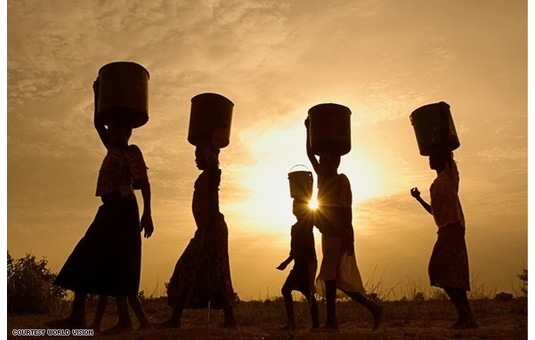National Womens’ Rights Day & Water

March 8th, marks the International Womens’ Rights Day or International Women’s Day, which is a day in honour of all women fighting for their equality in society, as well as for the protection of their rights on an international level. In spite of the fact that, in the last few decades, significant steps have been taken to ensure the protection of human rights of women, it is unfortunate they are still facing severe problems.
A prime example of this is their unequal treatment when it comes to the collection of water in developing countries, but also, their underrepresentation in the decision-making structures with regard to the management of water resources.

On a daily basis, women all over the world, in order to ensure adequate quantities of water for drinking, cooking and sanitation for their families, devote a total of 200,000,000 hours, bearing heavy loads of water. In developing countries, the weight of finding and carrying water for their families is borne mainly by women and in fact, the hardship of finding non-polluted water forces young girls to leave school very early in order to devote themselves to this responsibility. At the same time, boys enjoy easy access to education and men are active in the technology and mechanical engineering sectors.
In spite of all this, women’s extensive engagement in the collection and usage of water has contributed to the acquisition of extremely invaluable knowledge regarding the availability, accessibility, management and storage of water (which they have handed down from generation to generation). If this knowledge was leveraged, it would contribute decisively to the improvement of the management of water resources. However, it is often looked down upon or even derided by men engaged in politics and science, and this leads to the exclusion of women from decision-making with respect to water resources, irrigation and water-sanitation programmes. There are other hindrances to women’s contribution to the development and management of water resources and the environment in general, such as traditions, legislation on inheritance rights, which exhibits a bias against women (women have access to half of the land they inherit or to no land at all), inadequate training, lack of funding for women’s business activities, etc.
In recent years, remarkable efforts have been made to promote the rights of women and their participation in positions of significant decision-making, which, however, are not enough. As long as they have the support of the state, as well as non-governmental organisations, women can act as catalysts and contribute significant life-giving force in the management of water resources. This is not only due to their obvious extensive knowledge, but also, their remarkable ability to co-operate with one another, their female nature and their sensitivity towards matters of the family, the common good and, ultimately, the environment itself.
Sources:


